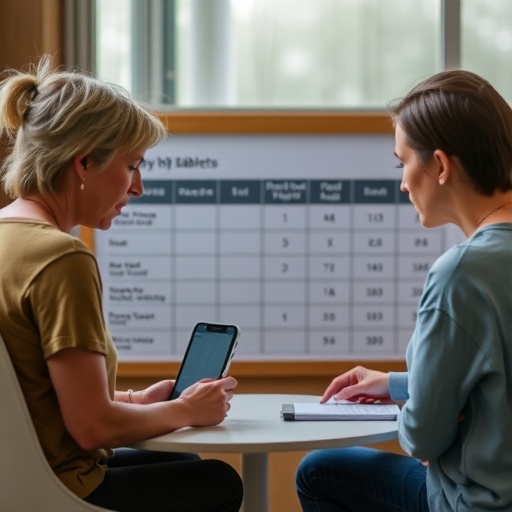A simple bedside test that matches a change in heart rate with a drop in blood pressure after a patient stands may help doctors diagnose certain degenerative brain diseases. This is the finding of a study led by neurologists at NYU School of Medicine and published in the March issue of Annals of Neurology.
The test could enable earlier diagnosis of a group of degenerative brain diseases called synucleinopathies, which include Parkinson's disease, Lewy Body dementia, and multiple system atrophy. Arising from the abnormal buildup of a protein known as alpha-synuclein in the brain, such conditions damage the nerves that control blood pressure and heart rate.
"For the first time, we have been able to systematically show that patients whose blood pressure drops after standing up without an accompanying increase in their heart rate may have a synucleinopathy," says lead study author Lucy Norcliffe-Kaufmann, PhD, research assistant professor of neurology, neuroscience and physiology and associate director of NYU Langone Health's Dysautonomia Center. "By taking a patient's blood pressure lying flat, then looking at the change in heart rate after the patient stands up, we can provide healthcare providers with clues as to whether or not the patient has this neurodegenerative disease."
Falling blood pressure after standing, a condition known as orthostatic hypotension, can cause dizziness, lightheadedness and fainting. When orthostatic hypotension is due to impaired activation of nerves that squeeze the blood vessels, the condition is called "neurogenic orthostatic hypotension," and is a hallmark feature of failure of the autonomic nervous system. This system regulates bodily functions such as heart rate, breathing, and metabolism.
Physicians typically distinguish neurogenic from non-neurogenic orthostatic hypotension by measuring a patient's heart rate upon standing. People with neurogenic orthostatic hypotension usually have little or no increase in heart rate after standing, while patients with the non-neurogenic form typically have a marked increase in heart rate.
The researchers identified 402 patients with orthostatic hypotension who had a normal heart rhythm. Of these, 378 were diagnosed with synucleinopathies. Orthostatic hypotension in the remaining 24 patients was determined to be due to non-neurological causes such as overmedication with blood pressure control drugs, anemia, or dehydration.
The patients had their blood pressure measured while lying on a tilting table, which mimics standing up and exerts a strain on the blood pressure causing it to fall. The researchers found that patients with neurogenic orthostatic hypotension had twice the fall in blood pressure but only one-third of the increase in heart rate than patients with non-neurogenic orthostatic hypotension.
Dr. Norcliffe-Kaufmann says the finding suggests that doctors should measure the blood pressure and heart rate of patients after they stand up rather than from a seated positions in patients who complain of fainting or dizziness when standing.
The study was supported by a National Institutes of Health (NIH) grant (grant no. U54-NS065736) to the Autonomic Disorders Consortium, a five-site clinical research initiative of which NYU Langone is a member. Study principal investigator Horacio Kaufmann, MD, director of NYU Langone's Dysautonomia Center, says the new study demonstrates the impact of major clinics in the United States working together on a rare disease.
"This study shows that researchers working on problems in rare diseases, such as blood pressure in synucleinopathies, can pool together data and ideas and develop a simple bedside test that can perhaps help spot these problems earlier," says Dr. Kaufmann, the Felicia B. Axelrod Professor of Dysautonomia Research in the Department of Neurology, and professor of medicine and pediatrics at NYU School of Medicine. "This should have widespread applicability."
###
In addition to Dr. Norcliffe-Kaufmann, co-authors are Horacio Kaufmann, MD, and Jose-Alberto Palma, MD, PhD, at NYU Langone; Cyndya A. Shibao, MD, MSCI, Italo Biaggioni, MD, Amanda C. Peltier, MD, and David Robertson, MD, at Vanderbilt University Medical Center; Wolfgang Singer, MD, PhD, and Phillip A. Low, MD, at Mayo Clinic; David S. Goldstein, MD, PhD, at National Institute of Neurological Disorders and Stroke, NIH; and Christopher H. Gibbons, MD, MMSc, and Roy Freeman, MD, at Beth Israel Deaconess Medical Center, Harvard Medical School; on behalf of the Autonomic Disorders Consortium.
Media Contact
Ryan Jaslow
[email protected]
212-404-3511
@NYULMC
http://nyulangone.org/
http://dx.doi.org/10.1002/ana.25170




